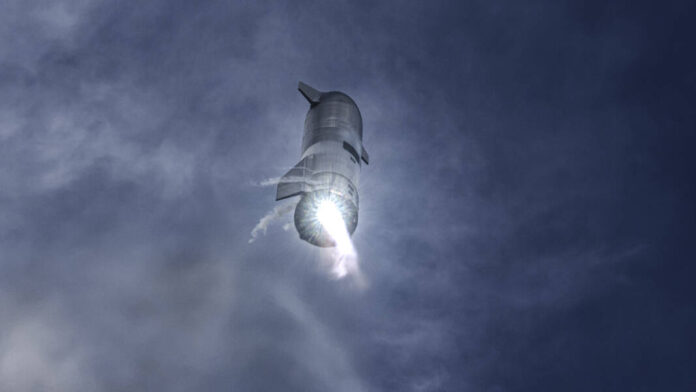Elon Musk, and the operations at the SpaceX Starbase rocket launch site at Boca Chica Beach, are in limbo created by the federal bureaucracy, and the passage of time is only making matters more complicated. Musk is in a holding pattern, unable to provide information to one agency until he receives information from another.
The U.S. Army Corps of Engineers last month informed SpaceX that it is withdrawing its application to expand the local test and launch site because the aerospace company hasn’t provided information regarding environmental protection and mitigation. It appears that at least part of that information — indeed, its entire expansion plans — depend on an environmental evaluation from the Federal Aviation Administration that was due last year and has been delayed several times.
SpaceX needs a new permit from the FAA to launch its largest rocket, Starship, from Boca Chica to the moon and, Musk hopes, eventually to Mars. The original permit was not for such orbital flights, as Starbase originally was planned to be a manufacturing and testing facility.
The FAA held public hearings on the matter in October and was expected to render a decision in December. Musk, who is not one to wait, built the infrastructure and tested the two stages of Starship, which is the largest rocket every built. Once tests were successful, Musk confidently announced that once he had the permits we could see an orbital launch from Starbase by the end of January.
However, the FAA, saying it had received more than 18,000 comments, delayed its decision first to January, then to March, and most recently to April 29. Knowledgeable observers have said they expect further delays.
The deal with the Corps of Engineers is to build secondary launch sites and other structures to support Starship launches, but without FAA permits those structures won’t be necessary.
The Corps’ concerns include how the construction project will affect about 17 acres of mud flats, estuarine wetlands and non-tidal wetlands.
Musk has said that if he doesn’t get the permit, he’ll simply launch from Cape Canaveral in Florida instead of the Rio Grande Valley. The trouble is, the only tower that can launch Starship is here; it would take 6-9 months to build a new tower in Florida.
Fortunately, Musk has said that he’ll pull back operations at Starbase but won’t pull out. If he can’t use it for orbital launches he’ll continue to use it as a testing site. One way or another, Valley residents and visitors will still be able to see the occasional spectacle of a rocket lifting off over the Rio Grande.
As delays lengthen, the FAA’s inaction could affect other government operations. NASA has contracted with SpaceX for several missions, including sending supplies to the International Space Station, and lunar landing missions.
To be sure, all environmental concerns need to be addressed properly. However, the longer the FAA delays, the more people and entities, both private and public, are affected.
Elon Musk might be the first to say that time is money. With projects of the magnitude of space exploration and travel, we could be talking billions. Let’s hope the decision comes soon.




